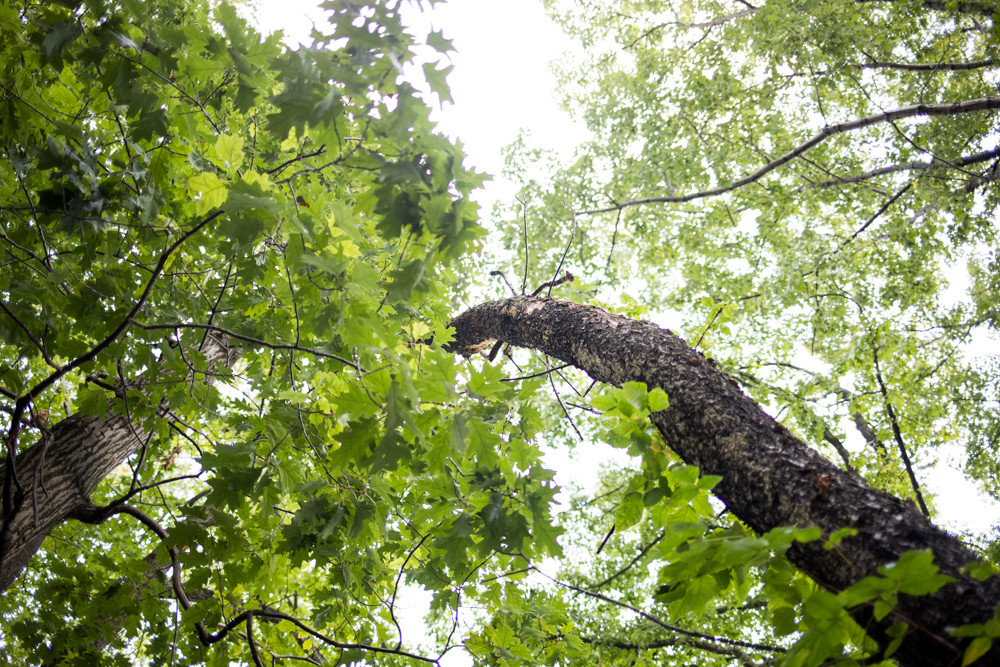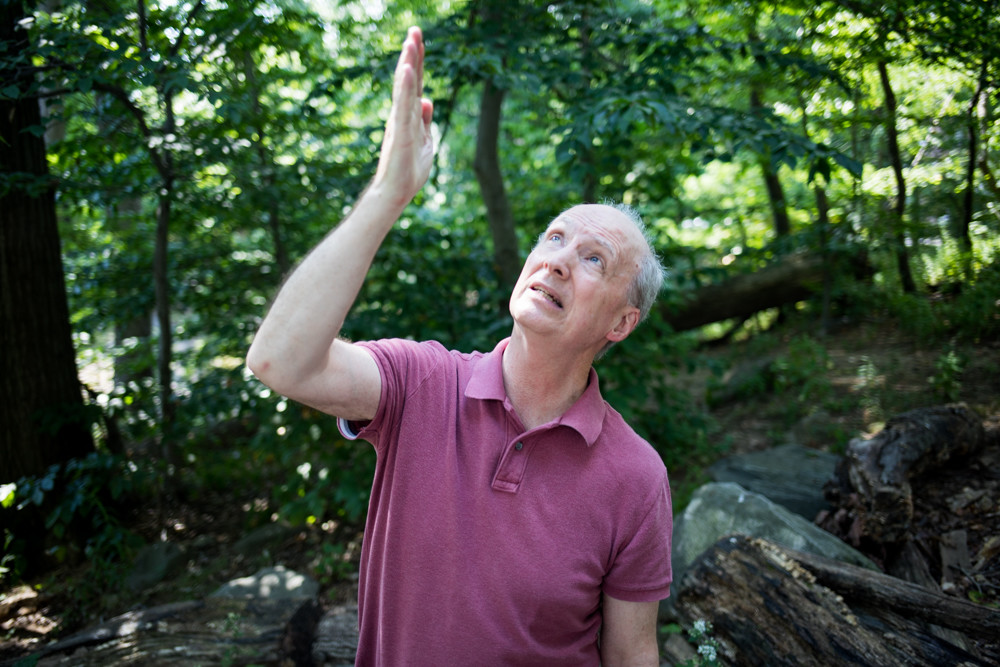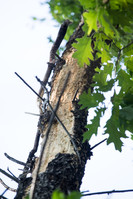If a tree falls in North Riverdale, who will care?
It’s not that Bob Mahony shouldn’t be concerned about the dying tree. In fact, he did the right thing by bringing it to the attention of his local park’s staff.
It’s just that, at the moment, the tree isn’t really a problem. Meaning it could remain in its limbo-like lean for a while.
The decaying tree tilts precariously into the crook of its neighbor’s branches, in the heart of North Riverdale’s Vinmont Veteran Park at West 254th Street, threatening to collapse without warning, Mahony fears, onto the winding pathway below.
Why couldn’t the city just send a crew to remove the woody hazard? Mahony, a lifelong Riverdale resident and philosophy professor, wanted to know. The tree, he says, poses a risk to park goers pushing baby carriages along the pathway bordering the playground below its elevated wooded area.
The park itself, neighboring P.S. 81 Robert J. Christen School, also attracts throngs of kids.
Standing in shade and dappled afternoon light, Mahony, clad in faded polo, khakis, fitted Yankees baseball cap in hand, gazed up at the ailing tree.
Only recently did Mahony and his neighbors draw the parks department’s attention to the tree. They heard woodpeckers pecking away at it last March, but it wasn’t until May or June he says he noticed the rot.
The tree has been hanging at its menacing angle for more than a year. But it’s not really a dire threat — at least not yet — parks department spokeswoman Kelly Krause said.
After arborists evaluated the 10-inch black cherry, the plan is to remove it, Krause said — eventually. The parks department responds to more than 80,000 tree-related service requests each year.
“Based on this particular tree’s size, structure and location in a low-usage area, we have determined this tree does not currently present a hazard to public safety,” Krause said, meaning they’ll tackle removal after handling more critical, time-sensitive tree conditions.
In an effort to make parks safer for residents and take better care of their trees, the parks department launched a pilot program last year that uses tree assessment protocol based on standards set by the International Society of Arboriculture and the American National Standards Institute.
Under the program, parks experts inspect trees to identify issues before they become major problems, performing more systematic and preventive tree care, like taking care of hanging, dead and diseased limb conditions more frequently. It also means some smaller, low-risk dead trees will remain in place longer than in the past.
But the department also relies on residents like Mahony letting them know when they spot a potentially problematic tree.
Bob Bender, chair of Community Board 8’s parks and recreation committee, agrees with the parks department’s assessment of the Vinmont Veteran Park tree, since to him it doesn’t appear to be on the verge of collapsing just yet. And given the parks department has to prioritize trees that could endanger people or impede traffic, “I think they’re making the right call on this one,” Bender said.
Overall, it’s been a rough summer for trees, Bender said, with storms knocking them down in Van Cortlandt and other CB8 parks. He recalled running along Vannie’s cross-country trail one morning after one of those storms seeing at least three different spots where trees had come down. Parks workers were there within a day clearing the path.
“Van Cortlandt Park has thousands and thousands of trees,” Bender said. “When they don’t fall down on a trail or a pathway, the parks department leaves them because it is a forever-wild area. They’re intended for the natural processes to play out,” which can take decades.
“That’s the way nature is supposed to operate.”
Whenever there’s been a real hazard or inconvenience, however, the parks department has been quick to respond.
“It’s an ongoing problem,” Bender said. “We have so many trees in this community that it makes the community beautiful. But the consequence is that, from time to time, a tree limb is going to come down, or a tree’s going to come down. It happens often, and that’s why trees that are not an imminent hazard sometimes are there for months before anybody gets around to dealing with them.”
Another challenge facing the parks department is understaffing and lack of equipment, said Christina Taylor, executive director of Friends of Van Cortlandt Park. That, and the fact they’re operating on a shoestring budget.
Parks crews “can’t be in every corner of the park every second,” Taylor said. And whereas Van Cortlandt and Pelham Bay parks have their own forestry crews, smaller space offerings rely on the parks department’s citywide forestry division.
But trees — both standing and fallen — also are a crucial part of the ecosystem in a notably green part of the Bronx residents often take for granted.
“It’s amazing, sometimes, how much nature surrounds us every day that we don’t even realize it’s right there,” Taylor said.
Even though parks crews won’t remove the black cherry immediately, Mahony’s glad they’re keeping an eye on it.
“We’re grateful for what the parks department does here,” Mahony said, “But this was something that needed to be looked at.”
As for the tree?
“I think the tree’s past feeling,” Mahony said. “I don’t think there’s any life left in it. But I’m not a tree expert.”













